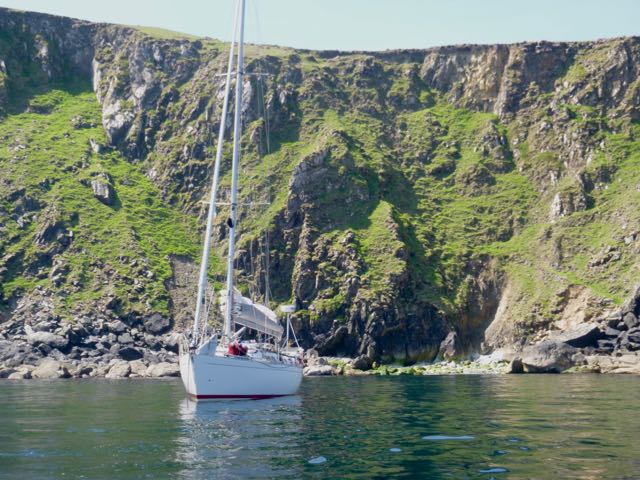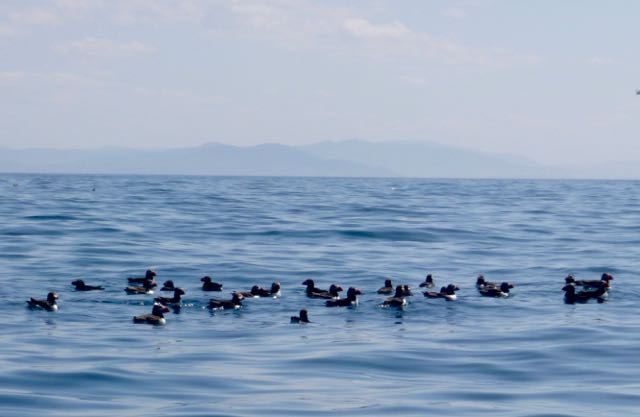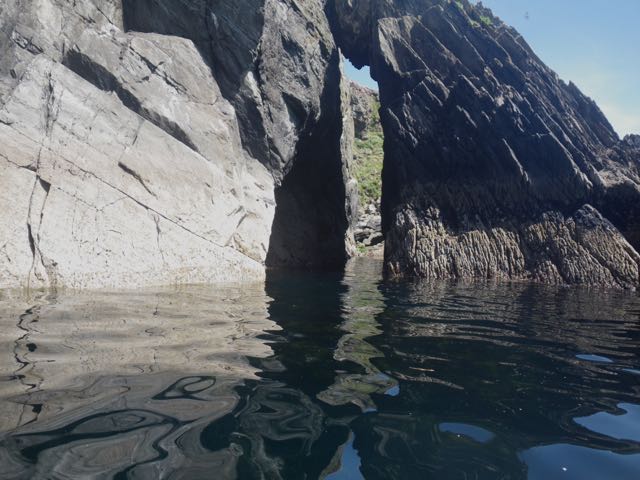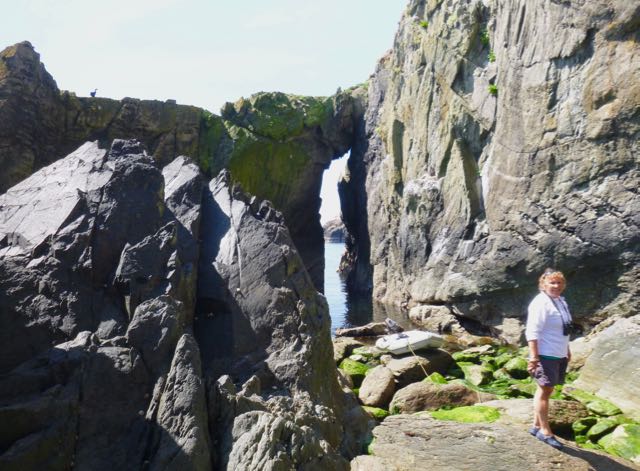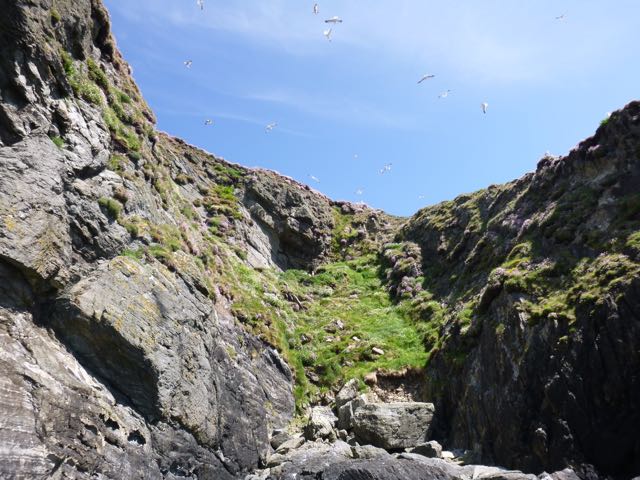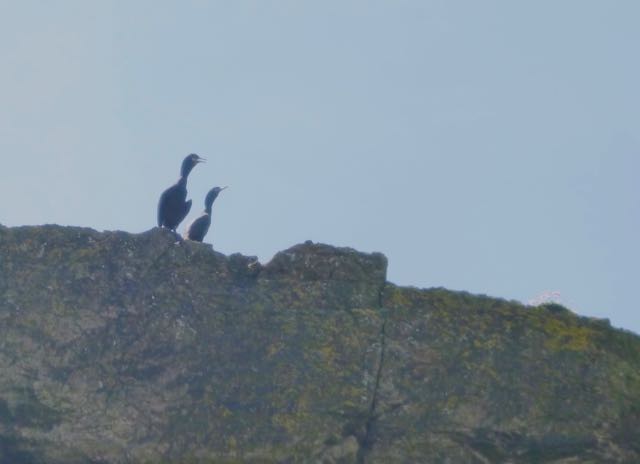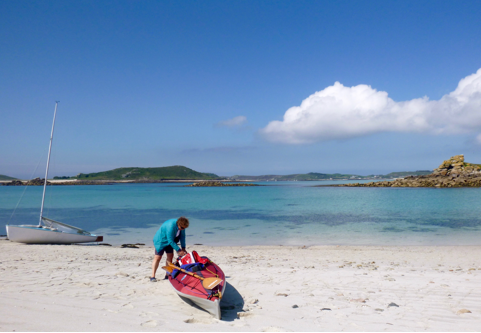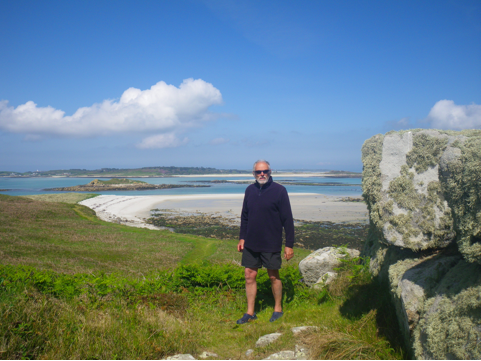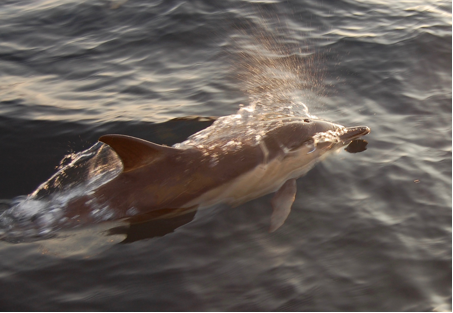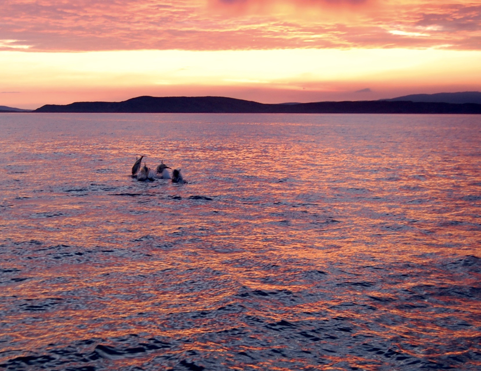Some things change – and some don’t.
We first came this way in 1994 in Polly. Jamie Wilkinson and I sailed the boat to and from the Hamble, a racing crew came over for a regatta in Baltimore and then each family had a 2 week cruise between Baltimore and Dingle. Its fun to retrace our steps and see if the huge changes in Ireland over the ensuing years have affected this marvellous coast
Baltimore, Schull and Crosshaven are still more or less unchanged, little North harbour on Clear Island has a fine new pier with lock gates to protect against Northerly swells , but still remains pretty primitive with no pontoons. The little anchorage under the ruined castle just outside Castletown-Bearhaven is as pretty as ever, but the ruins of Dunbar house nearby are spectacularly different. This huge gothic mansion was blown up by the IRA in the 1920’s and on our last visit we wandered through the roofless ruins. To our astonishment the building is now absolutely resplendent , looking better than it could ever have done in the past , except for the chain link fence that now surrounds it , a row of rather less attractive new buildings alongside , and the complete absence of any life .
 It seems that this was the archetypical Celtic Tiger folly – a project whose grandeur doomed it to failure when the Celtic bubble burst . Perhaps it was just as well as the adjacent little anchorage has been left in peace and is as charming as ever.
It seems that this was the archetypical Celtic Tiger folly – a project whose grandeur doomed it to failure when the Celtic bubble burst . Perhaps it was just as well as the adjacent little anchorage has been left in peace and is as charming as ever.
We have visited Dingle four times over the years, and on each occasion we have been met in the narrows by Fungie , the resident Bottle nosed Dolphin.
On our last visit 2 years ago we noted how he was no longer the exuberant animal of past visits , but he had nevertheless escorted us in and out in statesmanlike manner. To our dismay on arrival we passed through the narrows with no Fungie to be seen; the first time ever. The harbour master showed surprise when we told him , but later told us that he had just been shown a photo where Fungie appeared to have a large propellor wound. He is now upwards of 40 years old ; would this be the end of him? Two days later we left just after dawn on a calm sunny morning , and to our ( and no doubt the whole of Dingle’s) relief , there he was, cruising gently alongside with his wound clearly visible . We raised our morning coffee cups to him in a toast to wish him a rapid recovery and many more years of health in his chosen home.
One thing that hasn’t changed is the friendliness of all we have met. Fishermen make a point of leaving their wheelhouses to wave and smile , ashore on the islands the residents are welcoming , and on coming in to anchor off Rosmoney point behind the wonderful islands that line the East coast of Clew bay a little rib scooted up. Oh oh , we thought , we are about to be shouted at ! Nothing could have been further from the truth as the young man at the wheel suggested that the holding wasn’t great , why didn’t we pick up a yacht club morning closer in , and was there anything we needed that he could help with.
Last but not least is the welcome offered us yet again by our friends Alex and Daria Blackwell on the other side of these islands. If there are more generous and affable hosts anywhere in the world, we have yet to meet them . It feels good to be here.



